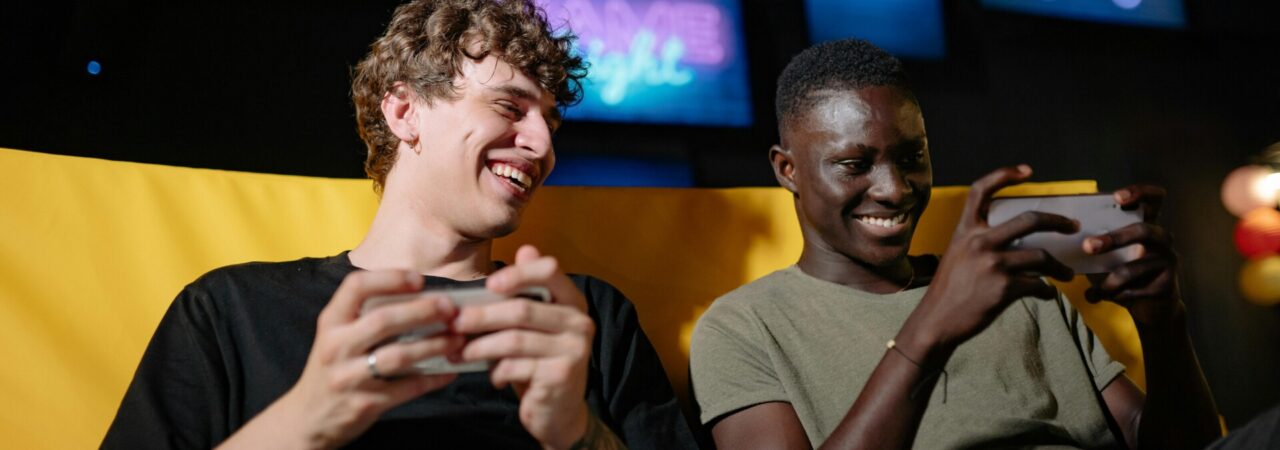This is my first piece of the year—but I won’t be talking about the New Year resolutions you should consider or how 2024 will be your year for personal growth.
I’m returning to a theme that often comes up—change, particularly when it comes to new technology. We live in the Information Age, where we have immediate access to a vast amount of information as well as the ability to share it instantly.
Change is the law of life. And those who look only to the past or present are certain to miss the future.
John F. Kennedy
I recently asked a young person how they communicate with their friends and family. They told me that the notion of calling someone on the phone is considered strange, almost bizarre. And you can forget about emails—no one reads them, unless it’s for a job application. Sending short messages via apps or social media is how young people communicate, they said.
When it comes to modern technology, we can think of people in two groups—digital natives and digital immigrants. Natives are those that grew up in the digital world and immigrants are those that have had to adapt to it. Digital immigrants, unsurprisingly, tend to be older and often fail to understand the needs of the younger generation. A survey by Sky showed that 57% of young people actively ignore phone calls from their parents but 71% of parents believe a phone call is still the best way to stay connected.
It’s not a faith in technology. It’s faith in people.
Steve Jobs
Creating and maintaining healthy relationships with young people is the cornerstone of youth work. The most important skill is being a good communicator; being able to clearly express yourself while also being an empathetic and attentive listener. Therefore, it goes without saying that when mentoring a young person, nothing beats a face-to-face meeting. That is the most effective way to build a relationship with the young person you’re mentoring. But, to set up such a meeting, you must first communicate with young people via the tools they use—we go where they are. It’s a core principle of detached work and, it goes without saying that it should be the same in the digital world too. For many young people, the digital world is their world, their playground. You have to go to where someone is in order to reach them—a lifeguard can’t do anything from the shore. Our detached work relies on tech: it supports our work and makes it more effective
A report from Finland (Digitalisation in Youth Work, 2019) stated that 91% of youth workers interacted with young people via social media or messaging applications. More than half (54%) said that they had counselled young people online. Here at LifeLine, looking at what our SW!TCH team does, I’d say the percentage is slightly higher than that.
Use of social media apps amongst young people
We encourage the use of tech to mentor and support the young people we serve—most of our Youth Development Workers communicate with young people via apps like WhatsApp and Instagram. To make this work, we made sure that everyone in the team was involved in adopting the new tools and processes. Our policies also had to adapt and change as new risks became apparent. As we invested in new tools, the team were evaluated and trained, and we made sure the team could feed back both good practices and pitfalls.
The main benefit of these apps is that you have direct contact with a young person. We have gained key intelligence through our use of social media, which we’ve used to prevent planned violent altercations and direct our detached youth development workers and, at times, the police. And, whilst some schools fully embrace our innovative approaches, others have been reticent about the use of social media, and mobile phones in general, as a way to support young people—they see it as a risk that can’t be managed on the school premises.
Social media can be really useful for youth workers. I’ve had situations where I was notified of threats online and I had to step in and diffuse the situation. Protecting young people doesn’t always happen in the real world—you can also protect them on online.
We also need to train our team how to use the tech, how to protect themselves, and how to keep young people safe. And we need to be aware of our own personal social media presence—how to keep them secure and separate from our work.


Royston
Youth Development Worker
There is a limit to how much a parent can control what apps or sites young people use to chat with their friends or access films, memes, and games. Eventually, you have to instil big-picture values in your children and let them work it out for themselves. If you care for a young person, I encourage you to try using their favourite apps or websites and see if you can spot a risk and try to manage it with the tools available. A report by Jigsaw Research indicates that parents are more likely to be worried about children spending too much time online rather than on the risks related to exposure from harmful content. Most of the tech that young people use have their own parental control functions. Parental controls are not that complex and setting them up doesn’t require a lot of time.
When my son asked me and my wife if he could get a phone, we were cautious and a little scared. We thought he was too young. What if he got mugged? What if he gained access to negative or inappropriate content? We relented and gave in but only under certain conditions. We made sure that we understood how to set controls and boundaries. It actually turned out better than we thought. He now communicates more with his family and cousins, even set up WhatsApp groups for us. He reads the news and his horizons have expanded. He’s a different person, more empathetic, and he finds it easier to relate to all types of people.
The little effort it takes to adapt and understand the young digital natives you care about is worth the effort—use this as an opportunity to connect as a family. After all…
Technology is best when it brings people together.
Matt Mullenweg



